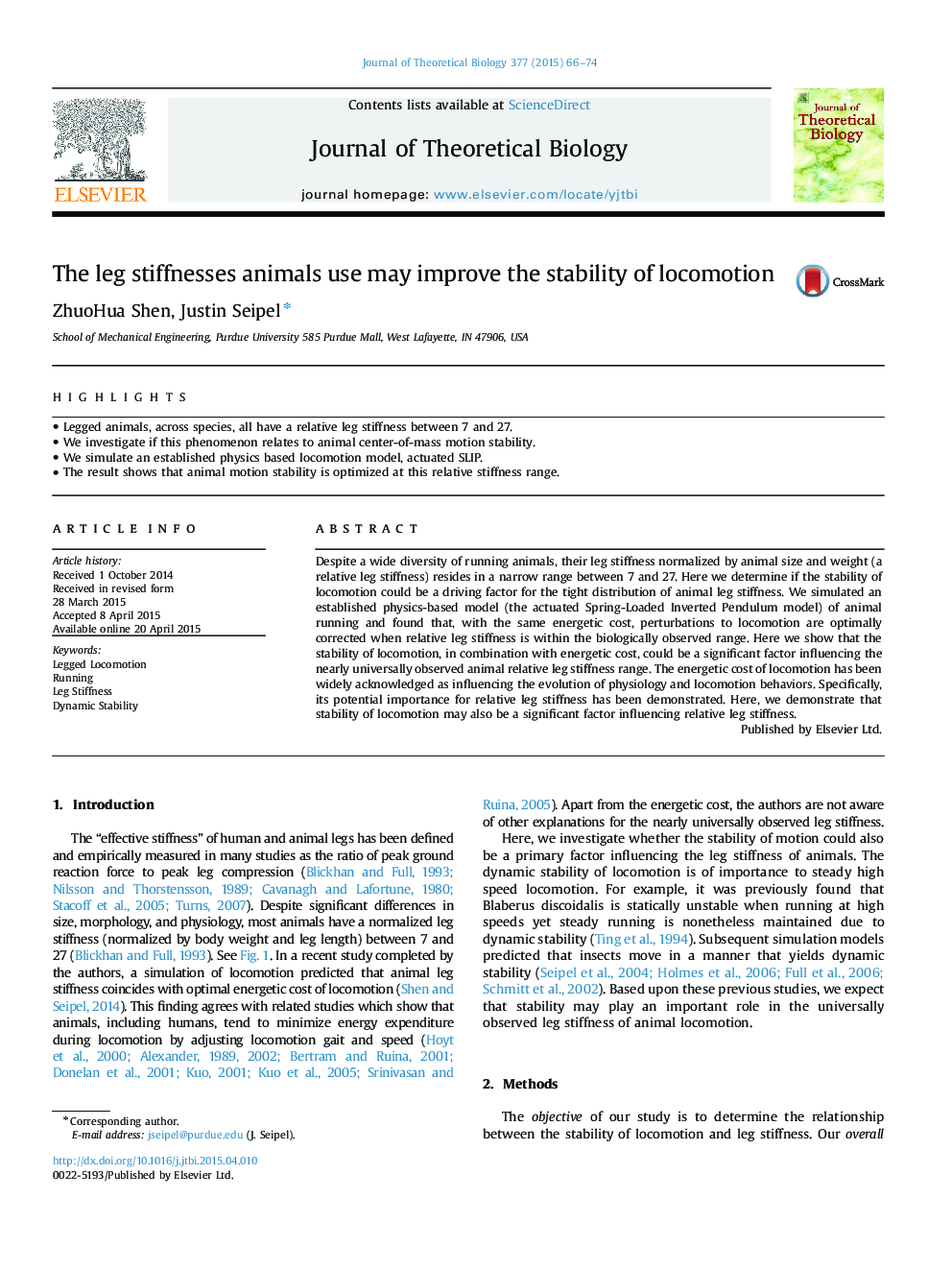| Article ID | Journal | Published Year | Pages | File Type |
|---|---|---|---|---|
| 4496054 | Journal of Theoretical Biology | 2015 | 9 Pages |
•Legged animals, across species, all have a relative leg stiffness between 7 and 27.•We investigate if this phenomenon relates to animal center-of-mass motion stability.•We simulate an established physics based locomotion model, actuated SLIP.•The result shows that animal motion stability is optimized at this relative stiffness range.
Despite a wide diversity of running animals, their leg stiffness normalized by animal size and weight (a relative leg stiffness) resides in a narrow range between 7 and 27. Here we determine if the stability of locomotion could be a driving factor for the tight distribution of animal leg stiffness. We simulated an established physics-based model (the actuated Spring-Loaded Inverted Pendulum model) of animal running and found that, with the same energetic cost, perturbations to locomotion are optimally corrected when relative leg stiffness is within the biologically observed range. Here we show that the stability of locomotion, in combination with energetic cost, could be a significant factor influencing the nearly universally observed animal relative leg stiffness range. The energetic cost of locomotion has been widely acknowledged as influencing the evolution of physiology and locomotion behaviors. Specifically, its potential importance for relative leg stiffness has been demonstrated. Here, we demonstrate that stability of locomotion may also be a significant factor influencing relative leg stiffness.
